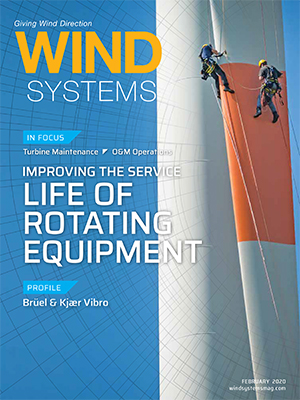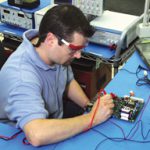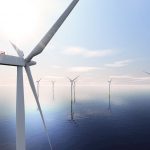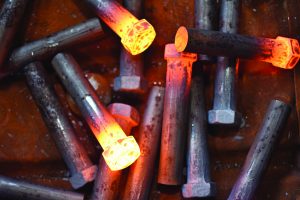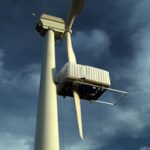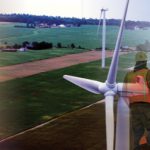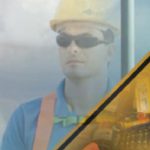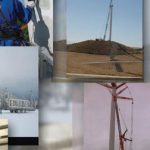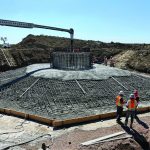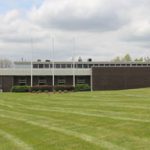With more than 550 GW of wind power installed world-wide, this renewable energy source is finding its way into all segments of society. Not just to our homes but also to industry, hospitals, nursing homes, fire stations, and schools.
What happens if wind turbines stand still because of mechanical problems? Simple, no energy is produced. This not only affects the profitability of the owners and operators of these assets, but this shortage of energy may have to be imported from a polluting thermal power plant to compensate, or worse yet, someone will be left without power.
This is where Brüel & Kjær Vibro (BKV) steps in.
“Simply put, our dedicated mission in life is to keep the wind turbines turning,” said Christian Klostermeier, head of the BKV Windpower Business Unit. “Not only these machines, but also steam turbines, gas turbines, hydro turbines, compressors, pumps, motors, generators, and many other critical and balance-of-plant machines in every walk of life. This is our only business.”
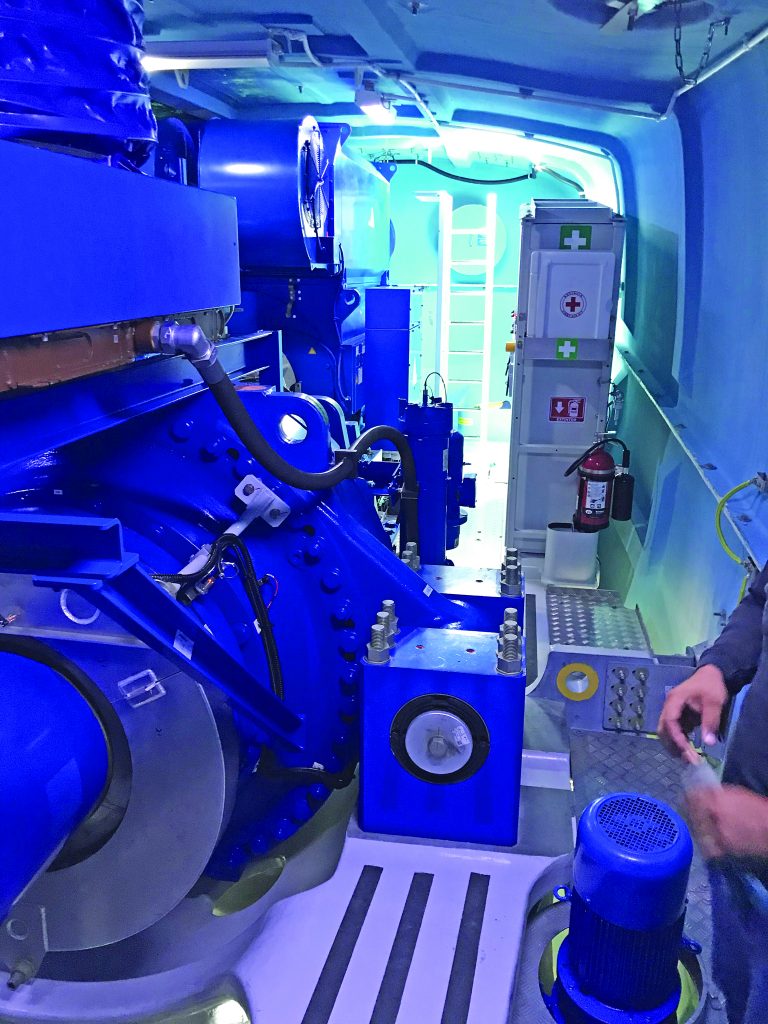
Healthy Insights
BKV is a machine condition monitoring company that provides solutions to the industry to maximize machine uptime while minimizing the life-cycle costs with reduced maintenance. One of the areas of its strategic focus is on the renewable energy market with a special emphasis on wind power.
“We help our customers reduce operational and maintenance costs by providing early insight into the health of individual wind turbine components,” Klostermeier said. “This enables them to replace only a single bearing or gear, for example, instead of replacing the entire gearbox that failed catastrophically because it was not properly monitored. Unplanned maintenance is every owner and operator’s worst fear, but this can be avoided by implementing cost-effective, planned maintenance through an effective condition monitoring solution.”
Renewable energy profitability is closely tied to how effectively asset health is managed. For wind turbines, there are no additional operational costs like those found in thermal power stations, such as for feedstock purchase or water and air pollution treatment.
Health management is so important to the wind industry, that basically every offshore wind turbine today is delivered with a condition monitoring system because of the high maintenance costs associated with their remoteness, according to Klostermeier. Land-based wind turbines are now following that lead, especially as their production capacity increases. Health insight obviously plays a critical role for these assets, both offshore and onshore, but how dependent is it on the type of condition monitoring solution offered?
Condition Monitoring Solutions are Not Equal
BKV, headquartered in Darmstadt, Germany, with the wind division based in Denmark, has been providing condition monitoring solutions to the wind industry for 20 years. During that time, there have been more than 25,000 BKV DDAU data acquisition systems sold world-wide, with up to 12,000 of these being remotely monitored as a service, according to Klostermeier.
“In addition to successfully providing value to so many owners and operators, this vast customer base also provided experience that enabled us to fine-tune our condition monitoring solution to what we’re offering to our customers today,” he said. “Very few in the industry dispute the merits of machine condition monitoring and the important role it plays in the predictive maintenance strategy, but what many fail to understand is that there is a big difference in what system suppliers offer. The big value difference is largely based on experience.”
BKV’s condition monitoring experience goes back more than 70 years ago, but enormous strides have been made within the last two decades while monitoring in the wind power industry, according to Klostermeier.
“Early and reliable detection of potential failure modes is one of the most important hallmarks of an effective condition monitoring solution, and this is an area where we did a lot of research on, combined with our experience,” he said. “An example of this is a series of early fault detection descriptors we have developed over the years based on statistical analysis of time waveforms. As a result of this, for some rolling element bearing faults, we can detect the onset of a fault two years before it has to be replaced.”
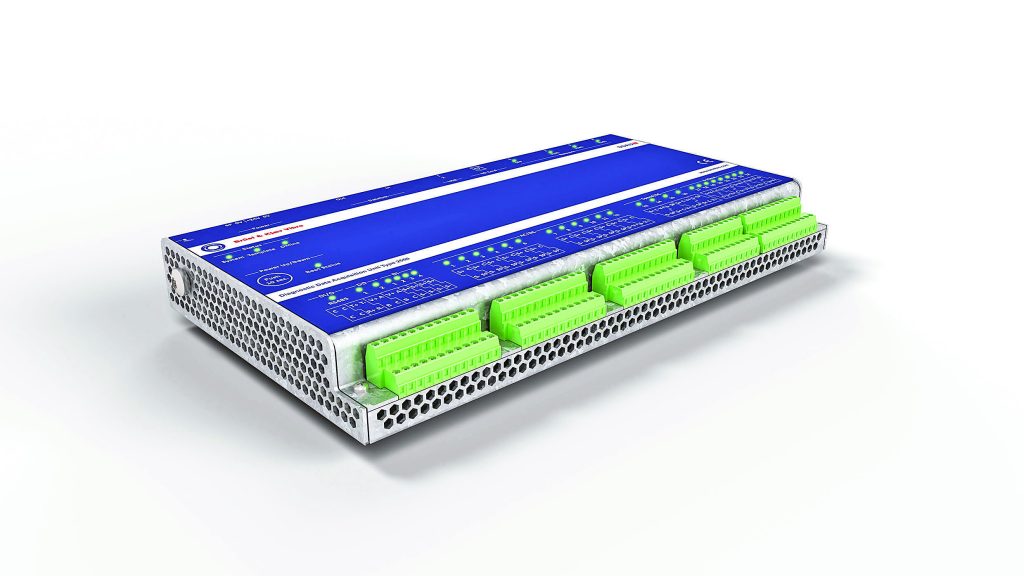
Another area where BKV puts a lot of resources is its web-based monitoring platform, VibroSuite, according to Klostermeier. It enables advanced diagnostics to be done on the time waveform data for the individual wind turbine and drive-train components, as well as used for turbine performance comparison through fleet monitoring.
“We also give a lot of attention to the user’s needs with respect to flexibility and control from the customer’s side,” he said. “We accommodate their expertise and combine it with ours to provide the optimal solution for the application.”
Service Minded to the Customer and the Industry
BKV has four surveillance and diagnostics service centers in Houston, Texas; Nærum, Denmark; and Beijing and Shanghai in China. Thousands of wind turbines the world over have been monitored by these service centers for many years. BKV’s renowned monitoring and diagnostic reports don’t just provide data, but they also include a call-for-maintenance action with a specified timeline, according to Klostermeier. The diagnosticians and analysts who do the monitoring and diagnostics, most of whom are Category III or Category IV certified for vibration analysis, are recognized for their expertise.
Service is not just limited to diagnostics. When a customer approaches BKV, Klostermeier said the first steps in working together are developing a customized monitoring strategy for their specific needs.
“It usually starts out with a standard model, but then we would develop a customized strategy on how we monitor these turbines,” he said. “That starts with us going onsite, inspecting the turbines, and looking for the best place for the sensors. We know from the setup how many sensors that we need. And once we have placed the sensors and have commissioned all the sensors in the set up, we would run it for two to four weeks to learn the system. The system needs to learn what is the baseline condition of the turbine or what is considered a healthy stage of the turbine.”
Often, as soon as the system is switched on, it immediately detects faults, according to Klostermeier, so a customer is advised to repair any faults picked up during that initial run in order to establish that baseline.
“The beauty of BKV’s services is that it often detects problems that are overlooked by visual inspections,” he said.
Sometimes sensor data will indicate specific faults and when the company investigates with a borescope, it discovers that a small chip is missing on the ball of a bearing or a tooth may have a slight crack, according to Klostermeier.
“I think these are very proud moments,” he said. “Especially for our diagnostic guys to be able to say, ‘Hey, we were spot on again,’ and proves that we have the right tools in place.”
Service is not limited to the customer either. The experts at BKV also have been active in writing and developing ISO and IEC standards for condition monitoring of wind turbines, according to Klostermeier, as part of their contribution to the entire industry. They are also active in presenting papers at conferences, writing case studies, and organizing webinars.
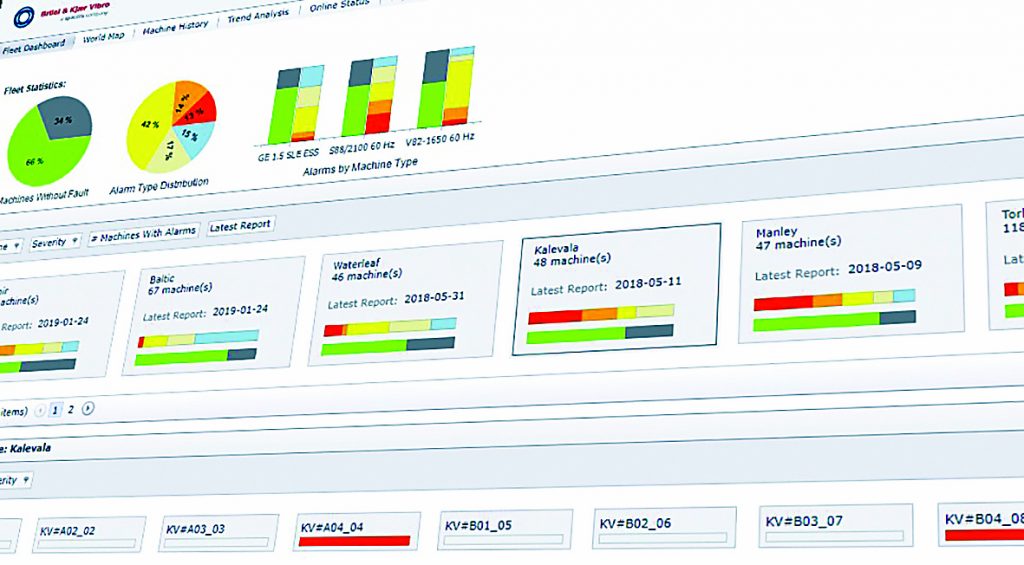
“We have a collaboration with the Mobius Institute, which certifies training for diagnostic engineers,” he said. “And we cooperate a lot with various international institutions and universities. We feel it is important to share our expertise to help make for a better world, not only for our customers, but also for their customers and stakeholders.”
Evolving Technology
Over the years, BKV has accumulated a vast database of monitoring data that includes fault data on almost every imaginable potential failure mode. This database fits very well into artificial intelligence (AI) and machine learning (ML) development, according to Klostermeier.
“We have this huge treasure trove of data, and what we are working on at the moment is automating our diagnostic systems, so that the algorithms can automatically detect faults without human intervention,” he said. “For us, the future will be the integration of ML and AI algorithms. We’re deep into development in this area, and we already have prototypes in place that are currently being tested against live data we get from the turbines. It is something I’m really pumped about in relation to what the team is currently developing.”
Looking toward the future and looking back at what has already been accomplished, Klostermeier says he is confident that BKV is best positioned in the industry to ensure the turbines keep turning.



















